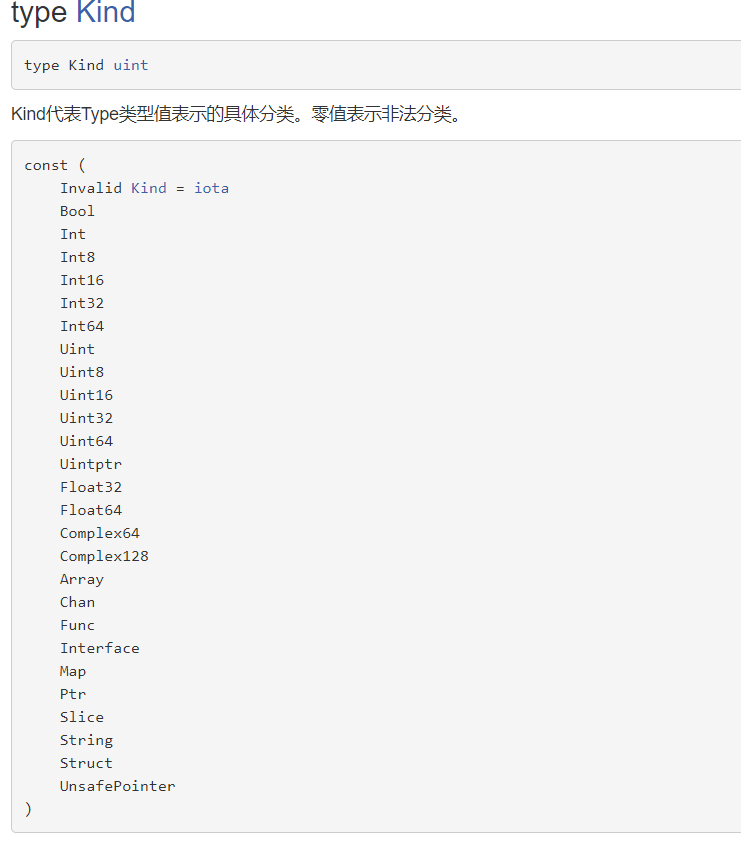 获取变量的类别
获取变量的类别
# 4. 获取变量的类别
# 获取变量的类别:两种方式:
reflect.Type.Kind()
reflect.Value.Kind()
# Kind的值是常量值

package main
import (
"fmt"
"reflect"
)
// 利用一个函数,函数的参数定义为空接口:
func testReflect2(i interface{}) { //空接口没有任何方法,所以可以理解为所有类型都实现了空接口,也可以理解为我们可以把任何一个变量赋给空接口。
//1.调用TypeOf函数,返回reflect.Type类型数据:
reType := reflect.TypeOf(i)
//2.调用ValueOf函数,返回reflect.Value类型数据:
reValue := reflect.ValueOf(i)
//获取变量的类别:
//(1)reType.Kind()
k1 := reType.Kind()
fmt.Println(k1)
//(2)reValue.Kind()
k2 := reValue.Kind()
fmt.Println(k2)
//获取变量的类型:
//reValue转成空接口:
i2 := reValue.Interface()
//类型断言:
n, flag := i2.(Student2)
if flag == true { //断言成功
fmt.Printf("结构体的类型是:%T", n)
}
}
// 定义学生结构体:
type Student2 struct {
Name string
Age int
}
func main() {
//对结构体类型进行反射:
//定义结构体具体的实例:
stu := Student2{
Name: "丽丽",
Age: 18,
}
testReflect2(stu)
}
/*
struct
struct
结构体的类型是:main.Student2
*/
1
2
3
4
5
6
7
8
9
10
11
12
13
14
15
16
17
18
19
20
21
22
23
24
25
26
27
28
29
30
31
32
33
34
35
36
37
38
39
40
41
42
43
44
45
46
47
48
49
50
51
2
3
4
5
6
7
8
9
10
11
12
13
14
15
16
17
18
19
20
21
22
23
24
25
26
27
28
29
30
31
32
33
34
35
36
37
38
39
40
41
42
43
44
45
46
47
48
49
50
51
编辑 (opens new window)
